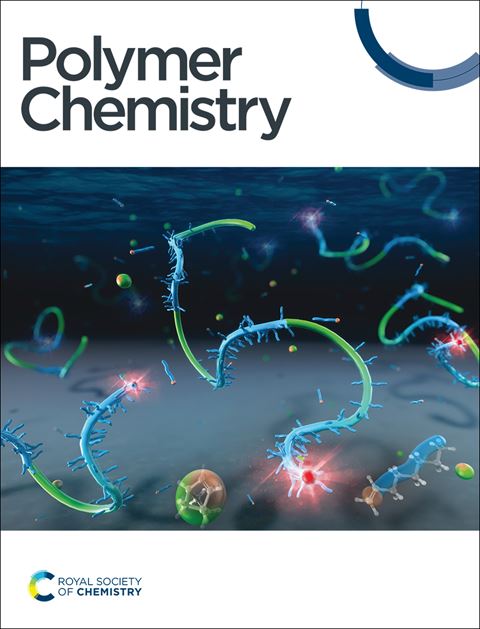可拉伸耐低温柔性环氧树脂固化剂的制备及性能研究
IF 3.9
2区 化学
Q2 POLYMER SCIENCE
引用次数: 0
摘要
介绍了两种创新的环氧固化剂分子设计策略,以解决传统环氧体系固有的脆性和低温限制。合成了硅烷改性固化剂(delta - si)和柔性链固化剂(NBOn),实现了前所未有的机械-电-热协同效应。delta - si /EP复合材料的断裂伸长率达到创纪录的125%(比未改性的体系提高了22倍),同时保持了超低的介电损耗(tan δ <;0.04)和热稳定性(Td = 236℃)。NBOn系列,包含刚性苯环和可调脂肪链,表现出优异的低温回弹性:298 K时伸长率为18%,在液氮(77 K)中浸泡24小时后延展性保持50%。EP/NBO10固化的导电复合材料在30天的低温暴露下表现出稳定的电阻(±5%)。自由体积工程,通过WLF模型验证,巩固了增强的低温性能。这些进步为在极端条件下运行的柔性电子产品(如柔性传感器和极地气候设备)中的环氧树脂建立了典范。本文章由计算机程序翻译,如有差异,请以英文原文为准。

Preparation and properties of stretchable low temperature resistant flexible epoxy resin curing agent†
Two innovative molecular design strategies for epoxy curing agents to address the inherent brittleness and cryogenic limitations of conventional epoxy systems are introduced. A silane-modified curing agent (DETA-Si) and a flexible-chain-engineered curing agent (NBOn) were synthesized to achieve unprecedented mechanical–electrical–thermal synergies. The DETA-Si/EP composite demonstrates a record-breaking elongation at break of 125% (22× improvement over unmodified systems) while maintaining ultralow dielectric loss (tan δ < 0.04) and thermal stability (Td = 236 °C). The NBOn series, incorporating rigid benzene rings and tunable aliphatic chains, exhibits exceptional cryogenic resilience: 18% elongation at 298 K with >50% ductility retention after 24-hour immersion in liquid nitrogen (77 K). Conductive composites cured with EP/NBO10 show stable resistance (±5%) under 30-day cryogenic exposure. Free volume engineering, validated via WLF modeling, underpins the enhanced low-temperature performance. These advancements establish a paradigm for epoxy resins in flexible electronics operating under extreme conditions, such as flexible sensors and polar climate devices.
求助全文
通过发布文献求助,成功后即可免费获取论文全文。
去求助
来源期刊

Polymer Chemistry
POLYMER SCIENCE-
CiteScore
8.60
自引率
8.70%
发文量
535
审稿时长
1.7 months
期刊介绍:
Polymer Chemistry welcomes submissions in all areas of polymer science that have a strong focus on macromolecular chemistry. Manuscripts may cover a broad range of fields, yet no direct application focus is required.
 求助内容:
求助内容: 应助结果提醒方式:
应助结果提醒方式:


